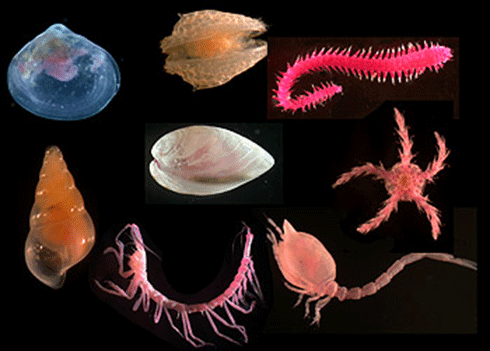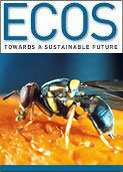
|
Published: 18 November 2013
Boom and bust above feeds life deep below
Until now, it was thought the only source of food for animals living on the abyssal plain, many kilometres below the ocean surface was ‘marine snow’ – a slow drift of mucous, faecal pellets, and body parts – sinking down from surface waters. Yet researchers have also been puzzled by the fact that this light fall of ‘snow’ could not support all the animals and microbes living in deep-sea sediment.
US researchers have now found an explanation – occasional population booms of algae or animals near the sea surface that sink and deliver huge pulses of organic material to the deep seafloor. Over a few weeks, such events can deliver as much food to deep-sea animals as would normally arrive over years, or even decades, of typical marine snow.
The conclusion was the culmination of 20 years of study, by scientists from the Monterey Bay Aquarium Research Institute (MBARI), of animals living at a deep-sea research site about 220 kilometres off the Central California coast and 4000 metres below the surface.
The spot is home to a variety of deep-sea animals from sea cucumbers and sea urchins to grenadier fish, as well as myriad smaller animals and microbes living within the bottom-mud.
Results of the study have just been published in Proceedings of the National Academy of Sciences, by Ken Smith and colleagues from MBARI.
Using data collected between 1989 and 2012, the team compared the amount of marine snow arriving at the study site with estimates of populations of microscopic algae observed at the surface using satellites.
In most years, the amount of food arriving at the seafloor reached a yearly peak in summer and fall, but remained relatively low. However, during 2011 and 2012, the researchers observed three dramatic events that delivered huge amounts of relatively fresh food to the deep seafloor.
The first occurred in 2011, when large numbers of diatoms (a type of microscopic alga) bloomed near the surface, then sank rapidly to the seafloor. The second event occurred in 2012, when salps – gelatinous midwater animals that eat algae – reproduced rapidly in surface waters. When the salps died, they sank so quickly they carpeted the seafloor.
During the third event later in 2012, another algal bloom died off, sank and was rapidly consumed by deep-sea animals and microbes.
The researchers say such large, intermittent pulses of food could help sustain life in the deep for years or even decades. They have already seen changes in the numbers and types of deep-sea animals living the study site, which appear to result from the feasts of 2011 and 2012.
The researchers also note that deep-sea feasts may be increasing in frequency at this and some other deep-sea study sites around the world, perhaps due to increased productivity at the surface as a result of global warming. Alternatively, they say, these changes could simply reflect naturally occurring long-term cycles in the ocean. Information from such deep-sea studies will be essential to improving computer models of global carbon cycling and climate change.
To view MBARI’s video of life in the abyss, and the 2012 algal event from 4000 metres below, click here:
Source: MBARI




